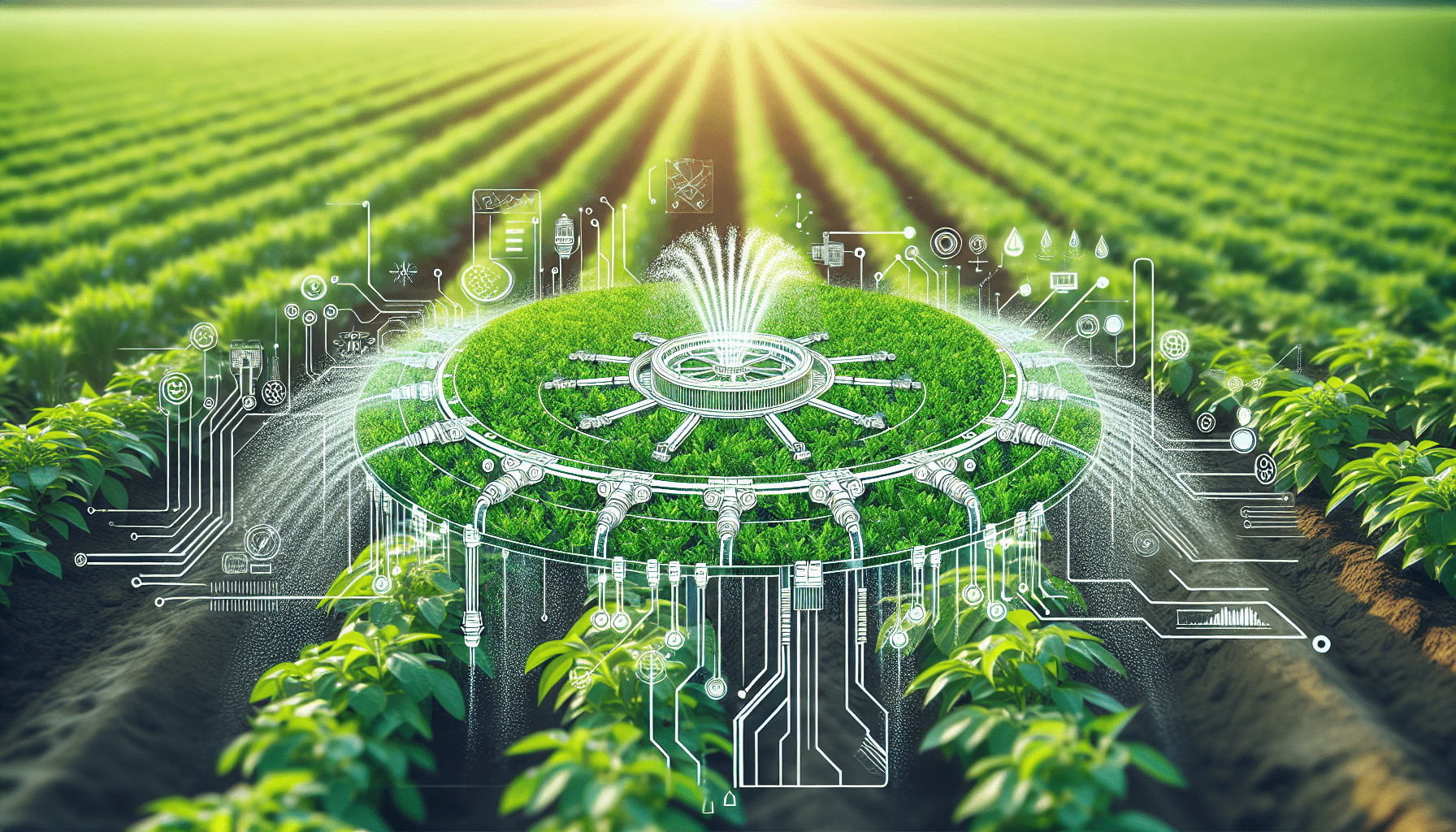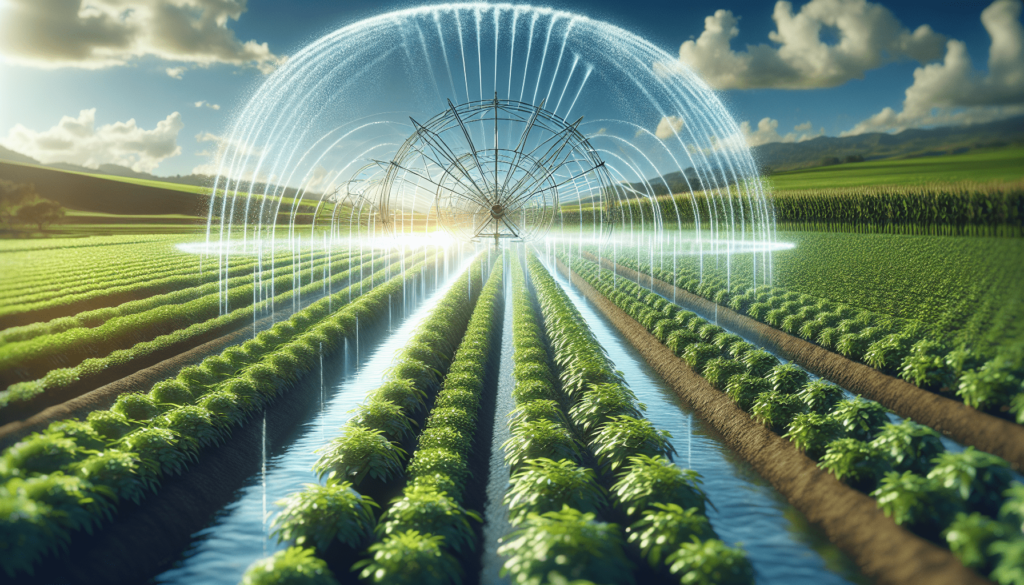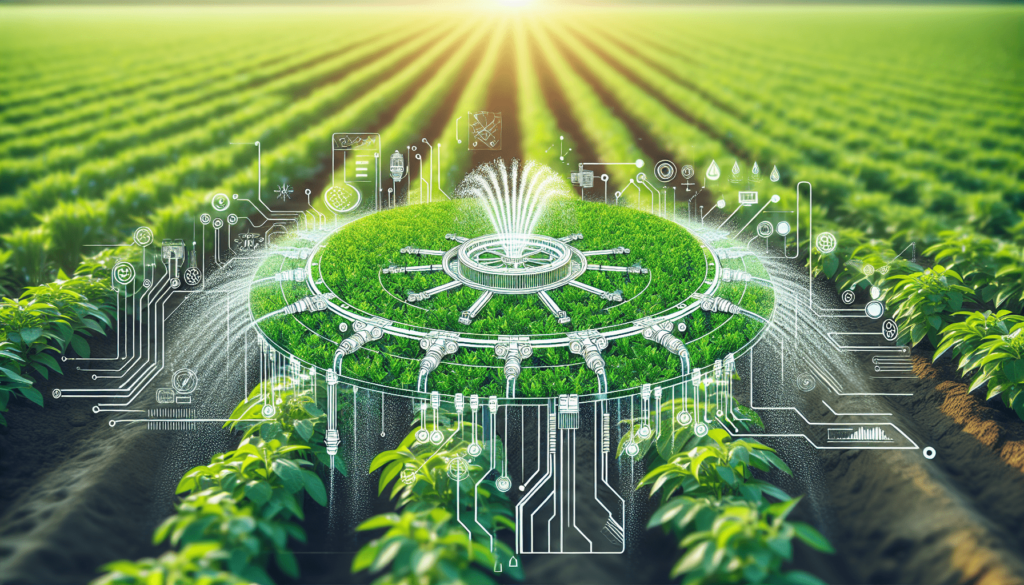
In “Understanding Smart Watering: How Does Smart Irrigation Work?” you’ll explore how cutting-edge modern technology has begun to seep into the realm of gardening and farming. This captivating journey offers an in-depth look at smart irrigation, a fascinating new system that can manage water usage efficiently with precision. By understanding its groundwork, its unique features, and how it functions, you’ll start to see just how substantial a difference this technology can make. This savvy watering solution could transform not just your backyard, but potentially the future of agriculture. Let’s embark on this insightful journey together.

Definition of Smart Irrigation
In our world today, saving water is an imperative task. One of the groundbreaking ways developed to achieve water conservation is through Smart Irrigation.
Understanding the term Smart Irrigation
Smart Irrigation is an innovative technology that uses an array of sensors and devices, data analytics, and automated control systems to manage the use of water in irrigation efficiently. This technology enables precision watering of plants or crops by taking into account factors such as soil condition, weather patterns, plant type, and other environmental variables.
Differentiating Smart Irrigation from traditional irrigation methods
Traditional irrigation methods tend to be manual or timed-based; that is, they water plants on a set schedule regardless of the plant’s actual water need. On the contrary, Smart Irrigation systems are dynamic and responsive. They can adjust watering schedules based on observed, predicted, or calculated plant water needs, minimizing over or under-irrigation.
Components of Smart Irrigation
The effectiveness of a Smart Irrigation system is determined by its constituent elements working synergistically together.
Major elements making up Smart Irrigation systems
A Smart Irrigation system consists of various elements like sensors, control systems, communication and networking elements, cloud-based data analytics platforms, and automated irrigation hardware or devices. It is their combined functioning that enables the system to deliver precise amounts of water when needed.
How each component functions within the system
The sensors in a Smart Irrigation system monitor various environmental factors like soil moisture, temperature, and humidity. The data collected by the sensors is then sent to the control systems. The control system analyzes the data and makes accurate watering decisions. Communication elements ensure data is relayed correctly and promptly between different parts of the system. Analytical platforms assist in drawing insights from the collected data and making future predictions. The automated irrigation devices carry out the watering instructions received from the control system.
Integrating the components for a smooth working system
For a Smart Irrigation system to work effectively, the integration of its components is key. Each part must optimally perform its function and seamlessly interact with the other components. This requires careful design, planning, and synchronisation, alongside on-going maintenance and troubleshooting.
Types of Smart Irrigation Systems
Smart Irrigation technologies keep evolving, and various types have emerged based on how they determine when and how much to water.
Weather-based systems and how they work
A weather-based Smart Irrigation system, also known as an evapotranspiration (ET) system, uses local weather data to estimate the water needs of plants or crops. It takes into consideration factors like temperature, wind speed, solar radiation, and humidity to estimate the rate at which water is lost from the soil and the plants.
Soil moisture-based systems and their operation
Soil moisture-based systems work by directly measuring the moisture level in the soil using sensors. They provide irrigation only when the soil moisture drops below a set threshold, ensuring that plants get water only when they need it and not based on a pre-set schedule.

The Role of Technology in Smart Irrigation
Technology is at the heart of Smart Irrigation, driving its innovation, functionality and effectiveness.
Use of wireless technology
Wireless technology is vital in Smart Irrigation. It fosters real-time data collection and wireless control of irrigation devices. This kind of technology provides maximum flexibility and convenience, and it enables remote monitoring and control of the irrigation system, making management easier and more efficient.
Integration of Internet of Things (IoT) in Smart Irrigation
IoT technology has revolutionized Smart Irrigation by enabling the connection of sensors, controllers, irrigation devices and data analytics platforms into one cohesive, interactive network. With IoT, a smart irrigation system can be monitored and controlled through smartphones or personal computers, providing detailed information regarding irrigation activities, using real-time data to adjust watering schedules continuously.
Software and applications used in Smart Irrigation
Several software applications and platforms are utilized in Smart Irrigation to enable data collection, data analysis, control and monitoring functions. They often come with user-friendly interfaces and enable the integration of multiple data sources, providing predictive analytics, reports, alerts and more.
The importance of data analytics in smart watering
Data analytics is a crucial component in Smart Irrigation. It involves the deep analysis of vast amounts of data generated by the system, upon which insightful decisions are made that result in efficient watering. It aids in identifying trends, generating forecasts, and discerning patterns that can enhance irrigation strategies.
The Working Principle of Smart Irrigation
The application of sensors in detecting soil moisture
Sensors are the eyes and ears of a Smart Irrigation system. Moisture sensors measure the amount of water in the soil and determine if the plant needs watering. These sensors are strategically placed at different depths and locations in the soil to give the most accurate readings.
How Smart Irrigation systems make watering decisions
Upon collecting data from the sensors, the control systems analyze the data and calculate the exact amount of water required for the plants. Upon completion of this analysis, the control system sends this information to the irrigation hardware, which then dispenses the specified amount of water.
Data transmission in Smart Irrigation systems
Data transmission in Smart Irrigation systems is performed typically through wireless connections, although wired connections can be used depending on specific site requirements. The collected data from the sensors is instantly transmitted to the control system for analysis and action.
Benefits of Smart Irrigation
The benefits of Smart Irrigation are numerous and invaluable – impacting both the environment and the individual users.
Saving on water bills
Since Smart Irrigation systems eliminate overwatering, they can significantly reduce water usage. This, consequently, leads to substantial savings on water bills.
Promoting healthier plants
Overwatering or underwatering can adversely affect plant health. Smart Irrigation ensures plants receive the optimal amount of water they need, resulting in healthier and more productive plants.
Conservation of water
By using water more efficiently, Smart Irrigation contributes significantly to water conservation – a critical aspect in a world facing increasing water scarcity.
Time-saving mechanism
Smart Irrigation systems automate the entire watering process, thereby freeing up more time for users. This means they no longer have to worry about turning the sprinklers on or off.
Flexibility in managing irrigation schedules
With Smart Irrigation, users can easily adjust the watering schedules from anywhere and at any time. This gives them the flexibility they need to ensure their gardens or farms are taken care of, even when they are away.
Limitations of Smart Irrigation
While the benefits are numerous, there are also a few challenges to consider when adopting Smart Irrigation.
Understanding the challenges in the setup phase
The implementation phase for a Smart Irrigation system can be complex and might require professional help. It involves choosing the appropriate types of sensors, determining optimal sensor placement, setting up the control systems, and integrating all components.
Interference from landscape features
The effectiveness of a Smart Irrigation system can be affected by the specifics of landscape features, such as slopes, types of plants, and variations in soil type. These factors must be factored into the system design for optimum performance.
Data accuracy and sensor placement problems
The accuracy of the data produced by sensors in a Smart Irrigation system is dependent on their placement. Incorrectly placed sensors can lead to misleading data which would then result in inefficient watering.
Adopting Smart Irrigation
Despite its challenges, adopting Smart Irrigation presents plenty of rewards. However, careful consideration is needed before moving forward.
Factors to consider before moving to Smart Irrigation
Before setting up a Smart Irrigation system, several factors need to be taken into consideration. These include the size of the area to be irrigated, types of plants, soil conditions, availability of power and network connectivity, and the budget for the setup.
Determining the cost of setting up a Smart Irrigation system
While the initial cost of setting up a Smart Irrigation system may seem high, the long-term savings on water bills and the added convenience often offset this. It’s also fundamental to factor these costs into the expected return on investment.
Incidence of return on investment over time
The return on investment on a Smart Irrigation system is often realized over time. The more efficient use of water reduces bills significantly, and the convenience and productivity increase also adds to the returns.
Future Trends in Smart Irrigation
As technology advances, so does the potential for Smart Irrigation.
Predictions of Smart Irrigation development
As Artificial Intelligence and Machine Learning become more prevalent, it is predicted that these technologies will be integrated into Smart Irrigation to make it even more efficient. This will only further optimize water usage and enhance plant health and productivity.
The role of AI and machine learning in future Smart Irrigation
AI and Machine learning can help to analyze vast amounts of data more quickly and accurately, enabling real-time adjustments and decisions. They can also learn from past trends and predict future needs, allowing watering schedules to be even more precisely tailored.
Emerging startups and companies in the Smart Irrigation sector
Numerous startups and established companies are focusing their efforts on Smart Irrigation technologies, coming up with new and innovative solutions. Future developments are likely to see even more user-friendly interfaces, increased automation, better sensor technology, improved connectivity, and deeper data analytics.
Case Studies in Smart Irrigation
Examples of successful Smart Irrigation installations
Across the world, there have been several success stories regarding the implementation of Smart Irrigation. From small household gardens to large-scale farms, many have reported significant reductions in water bills and healthier and more productive plants.
Testimonials from users regarding Smart Irrigation efficiencies
Testimonials affirm the benefits users have experienced by adopting Smart Irrigation. Many users report not only significant water savings but also the convenience and peace of mind it offers.
Research findings on the impact of Smart Irrigation in agriculture and gardening
Research has shown that Smart Irrigation plays an instrumental role in promoting more sustainable agricultural and gardening practices. By optimizing water use, it contributes to water conservation and encourages healthier crop and plant growth, thereby supporting a greener world.
In conclusion, while Smart Irrigation might require an initial investment and involves a learning curve, its benefits are manifold, both for the individual users and the environment. As technology continues to evolve, Smart Irrigation is likely to become increasingly sophisticated and widespread, contributing significantly to the future of sustainable gardening and farming. There’s no doubt that Smart Irrigation represents the future of irrigation, aiding the conservation of one of our planet’s most essential resources – water.
